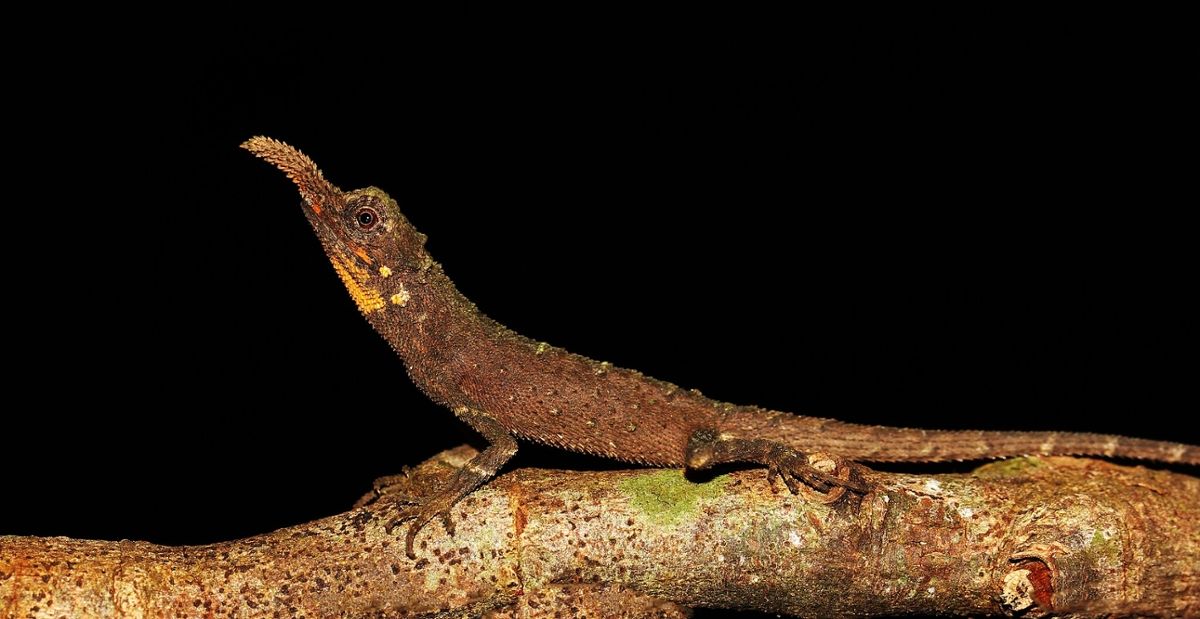D: When I was young, I wanted to be a famous scientist, discovering all sorts of new plants and animals. There’s so much biodiversity out there! Now it seems like every corner of the world has been studied and cataloged.
Y: Sometimes, fascinating creatures sit right under our noses. In fact, I have a story about a lizard with an unusual nose, and it might cheer you up!
D: Well, I’m always sniffing around for a good story.
Y: In 2018, a wildlife biologist was in the forests of North Sumatra. One day, he noticed a dead lizard with a strange feature: a horn, sticking straight ahead out of its snout! It was a nose-horned lizard, part of the family of dragon lizards, and it hadn’t been seen in almost a hundred and thirty years.
D: So it was a rediscovery. But those are also important for science: rediscovering animals from long ago shows us that they’re not extinct, and we can gain information about the creatures’ habits and environment. Then we can call for species conservation.
Y: Exactly. And the story gets better. This was one of the rarest lizards in the world, known to science from just a single specimen in Italy—the only recorded account of this creature, from 1891. It had been brought to Europe by explorer Elio Modigliani, and carefully preserved.
D: Did the wildlife biologist ever find a living nose-horned lizard?
Y: Several days later, he did! It was sleeping on a nearby branch, with bright, yellow-green scales. But when stressed, it turned brown.
D: Wow. I guess planet Earth still has some secrets.










